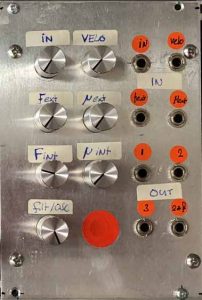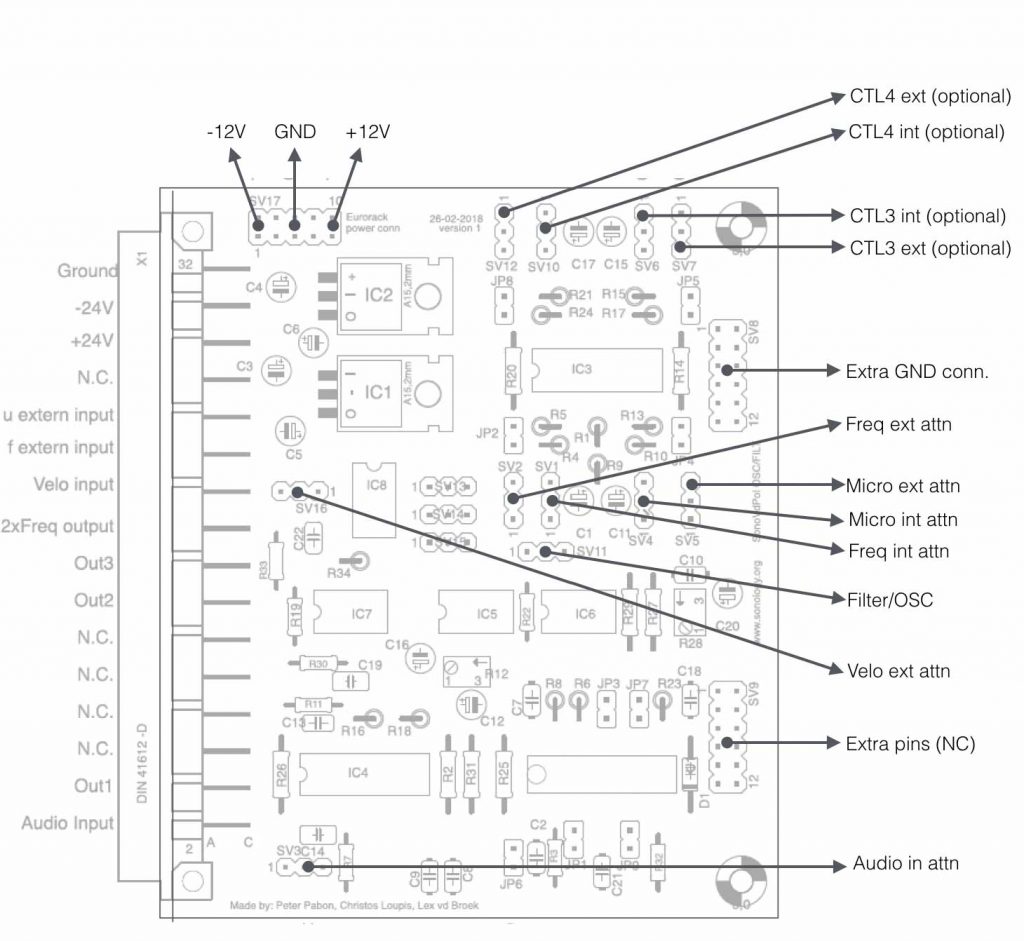This last month I finished the experiments with the 16bit DA converter, based upon the PT8211 low cost DAC-chip. The new board receives OSC (OpenSoundControl) and converts it to 6 times control voltages (CV) from -5V / +5V, with a resolution of 16bit (0-65535).
To be able to implement the vdPol Oscillators/Filter in the RC studio’s I created this card to be able to have full (digital) control over the frequency and ‘Mu’ of the vdPol. Two of the CV outputs of the DAC are linked to 2 VCA’s.

I will design a printed circuit board for this circuit soon, so more students can make use of the 16 bit OSC-CV conversion.
The version of the vdPol Oscillator/filter shown below, is a special version that has a ‘Vactrol’ on board that replaces the ‘mix’ potentiometer. By connecting the internal led of the Vactrol (through a resistor) to one of the DA board CV outputs, the resistance can be varied between 100Ohm and 1MOhm. So now the mode “Oscillation” (low resistance) and “Filter” (high resistance) is determined through one of the outputs of the DA-board. In a more conventional setup this could also be realised with an external CV input of course – making the vdPol even more interesting to embed in your modular! 😉





